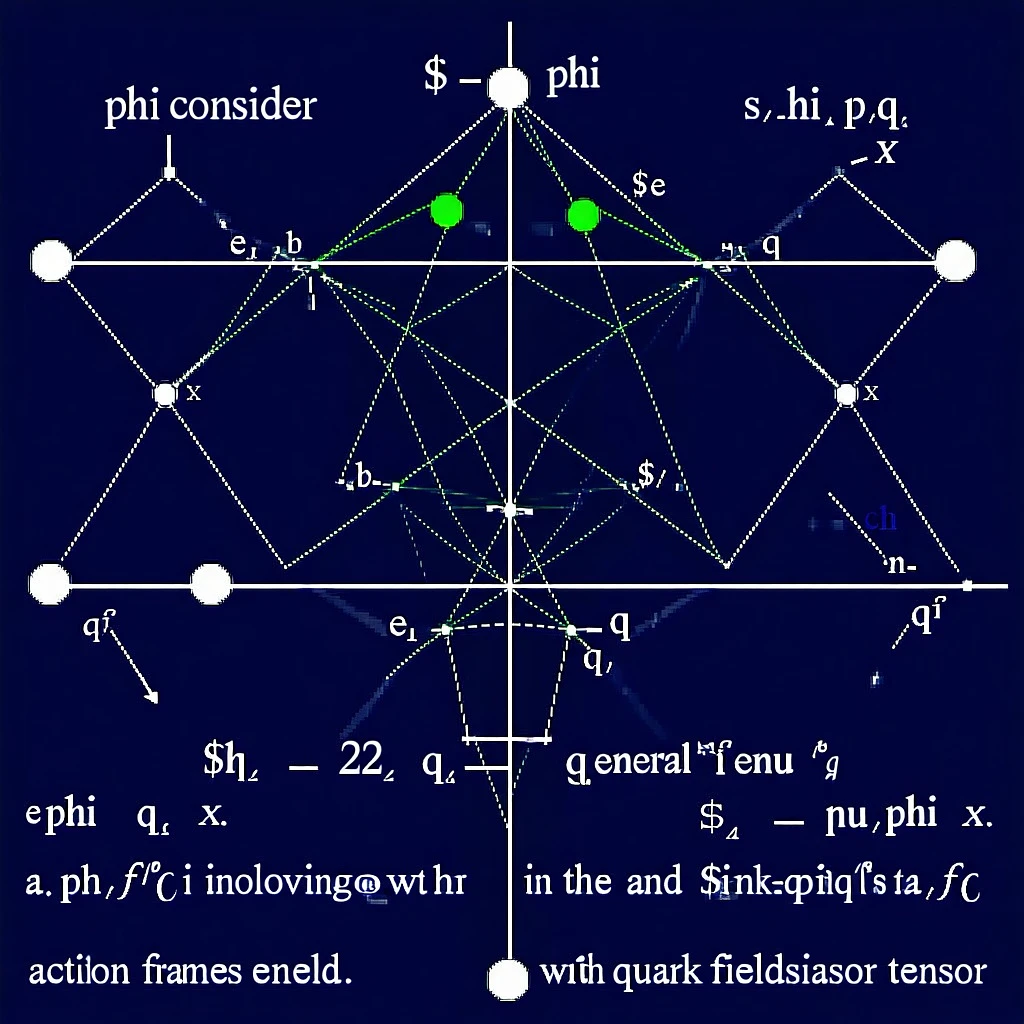
Learn to create better images with AI!
Check out our crash course in prompt engineering & AI art generation!
620ba102fd7
posted 28 days ago
22 views
0 comments
We consider the action $S_
{\phi q}
$ involving only $\phi_
{\mu\nu}
$ and quark fields $q
(x)
$ in general frames with Poincar\'e metric tensor $P_
{\mu\nu}
$:
\be
S_
{\phi q}
= \int
(L_{\phi q}
+ L_
{gf}
)d^4 x,
\ee
%%%%%%%%15%%%%22%%%%%24%%%22%%%19
\be
L_
{gf}
=\frac
{1}
{2g^2}
\e_
{\a\b}
\left
[\p_\mu J^{\mu\a}
- \frac
{1}
{2}
\e^
{\a\ld}
\p_
{\ld}
J^\mu_\mu\right]
\left
[\p_\nu J^{\nu\b}
- \frac
{1}
{2}
\e^
{\b\ld}
\p_
{\ld}
J^\nu_\nu\right],
\ee
%%%%16%%%%%%%23%%%%%25%%%23%%%%20
where $L_
{\phi q}
$ is given in
(7)
with the $T
(4)
$ gauge curvature $C_
{\mu\nu\a}
$ given by
(5)
.
We have included a gauge-fixing term $L_
{gf}
$ specified by
(20)
involving ordinary partial derivative to break the $T
(4)
$ gauge symmetry so that the solution of gauge field equation is well-defined.
The reason for including $L_
{gf}
$ is that field equations with gauge symmetry are known to be not well defined in general and that it is a nuisance to find explicit solutions of such field equations without having a gauge-fixing term.
The quark fields play the source for producing a gravitational potential field $\phi_
{\mu\nu}
$.
The $T
(4)
$ gravitational field equation for symmetric tensor field,
$\phi_
{\mu\nu}
=\phi_
{\nu\mu}
$ can be derived from
(19)
,
\be
H^
{\mu\nu}
+ A^
{\mu\nu}
= \frac
{g^2}
{2}
Sym \ \left
[ \overline{q}
i\G^\mu D^\nu q -
i
(D^\nu \overline{q}
) \G^\mu q \right]\equiv g^2 T^
{\mu\nu}
,
\ee
%%%%%26%%%17%%%%%%%%%24%%%%%%26%%%24%21
$$
H^
{\mu\nu}
= Sym
\left
[D_\ld (J^{\ld}
_\rho C^
{\rho\mu\nu}
- J^\ld_\a
C^
{\a\b}
_
{ \ \ \ \b}
P^
{\mu\nu}
+ C^
{\mu\b}
_
{ \ \ \ \b}
J^
{\nu\ld}
) \right.
$$
%%%%%%%%%%%%%%%%%%%%%%%%20%%%
\be
\left.
- C^
{\mu\a\b}
D^\nu J_
{\a\b}
+ C^
{\mu\b}
_
{ \ \ \ \b}
D^\nu J^\a_\a -
C^
{\ld \b}
_
{ \ \ \ \b}
D^\nu J^\mu _\ld\right],
\ee
%%%%%%%27 %%%%%%%%%%18%%%%%%%%%25%%%27%%%%25%%522
\be
A^
{\mu\nu}
=Sym \left
[ \p^\mu \left(\p^\ld J_\ld{^\nu}
- \frac
{1}
{2}
\p^\nu
J \right) - \frac
{\e^{\mu\nu}
}
{2}
\left
(\p^\a \p^\ld J_{\ld\a}
- \frac
{1}
{2}
\p^\a \p_\a J \right)\right],
\ee
%%%19%%%%%%%%%%26%%%%%%%%28%%%%%26%%%523
where $D_
{\mu}
q=\p_
{\mu}
q$ and $J= J^\ld_\ld$.
The symbol `Sym' in Eqs.
(21)
-
(23)
denotes that $\mu$ and $\nu$ should be made symmetric.
